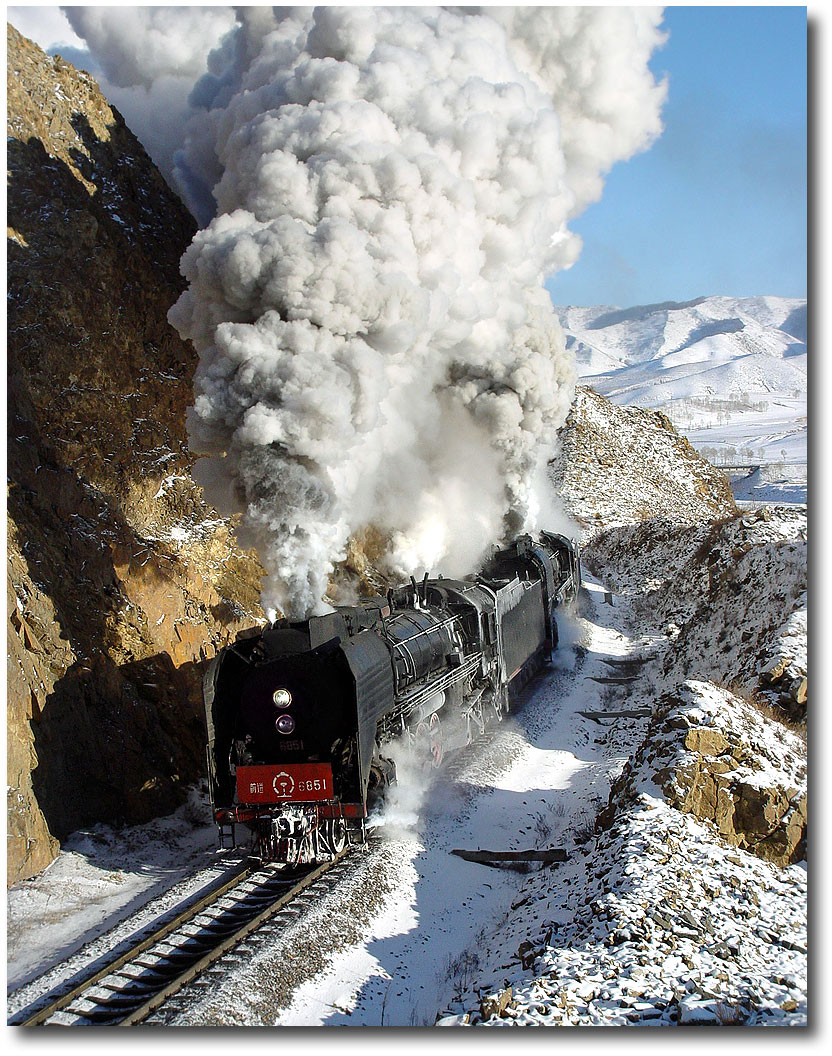 |
|
Horseshoe Curves, Tunnels, Bridges and 3000HP-steam engines that were forced to its limits - there was just no place on earth that could compare with the Jingpeng-Railway in terms of breathtaking steam action around the start of the new millennium.
The thundering exhaust beat of two QJ's was amplified to a deafening volume by the rocks as this train approached between Tunnel II and III. Dec. 24, 2002. |
|
|
|
|
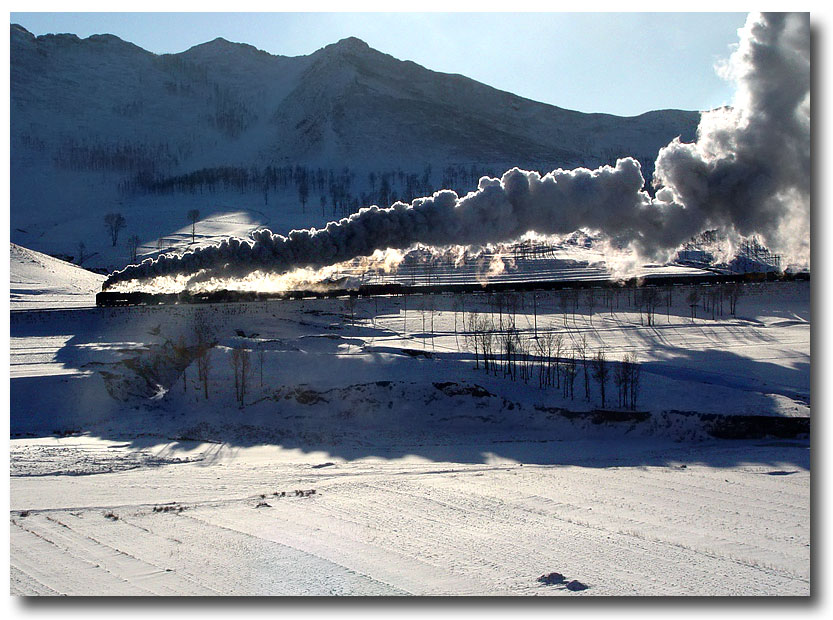 |
|
A
few minutes before, the train could be watched approaching on
the other side of the valley, before crossing it on a
bridge and entering Tunnel II and III. |
|
|
|
|
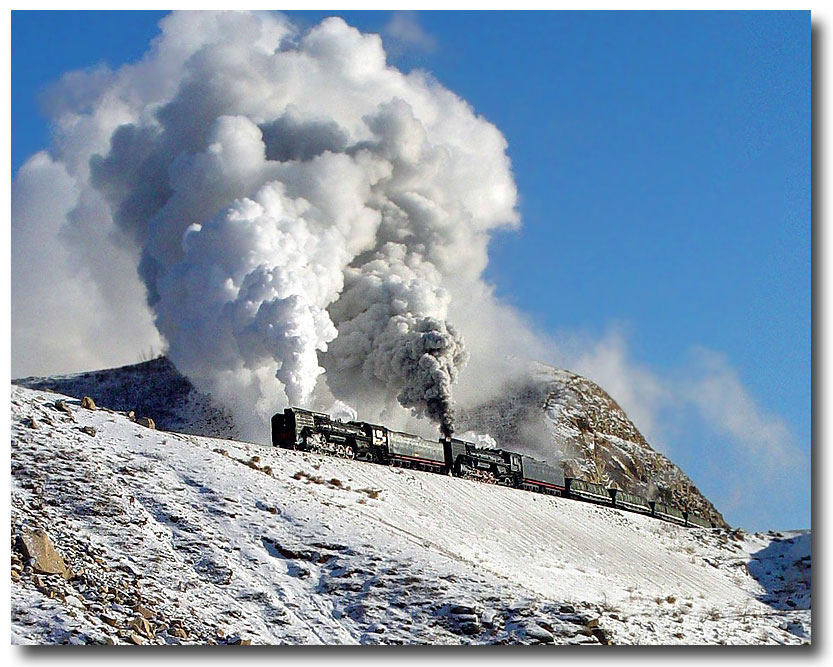 |
|
One day later and a little further uphill, another pair of QJ struggled on the western slope near DaYingZi. I sometimes got asked why I would take all the trouble of traveling to the farmost corners in the world in search for steam. Here is the answer! |
|
|
|
|
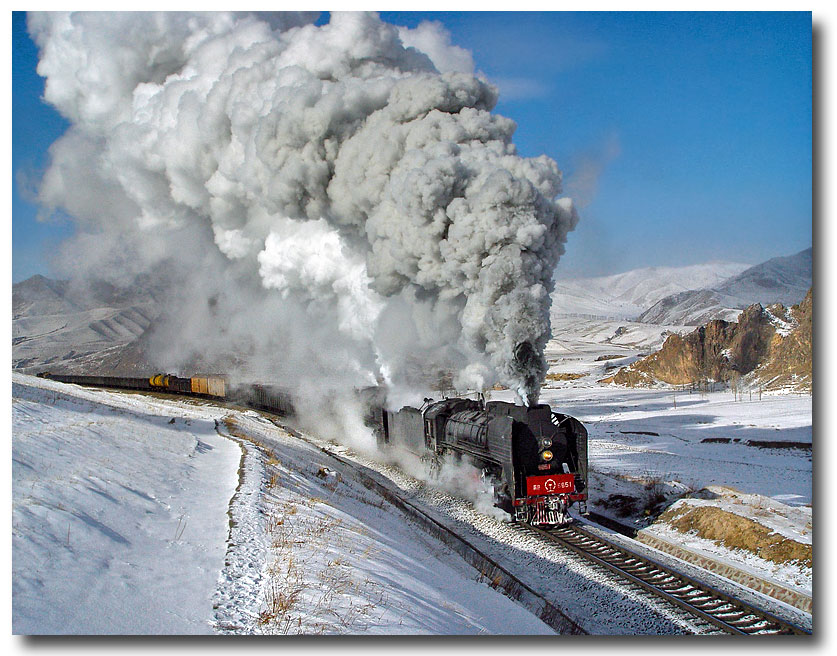 |
|
Two QJ with a combined tractive power of 6000 Hp could handle trains up to 3000 tons on the Jingpeng Pass. Above HaDaShan, little remained visible from the mountains in the background as this pair of QJ struggled against the grade. Dec.30, 2002. |
|
|
|
|
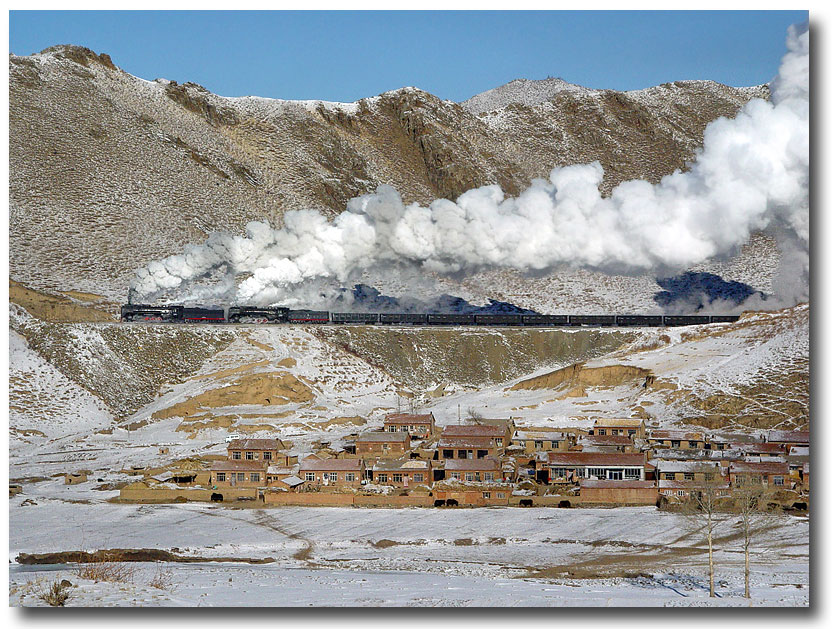 |
|
ErDi on the western slope of the pass. Just another remote, inner Mongolian village that hardly ever would have seen any foreigner if not this line would have been built. Dec.27, 2002 |
|
|
|
|
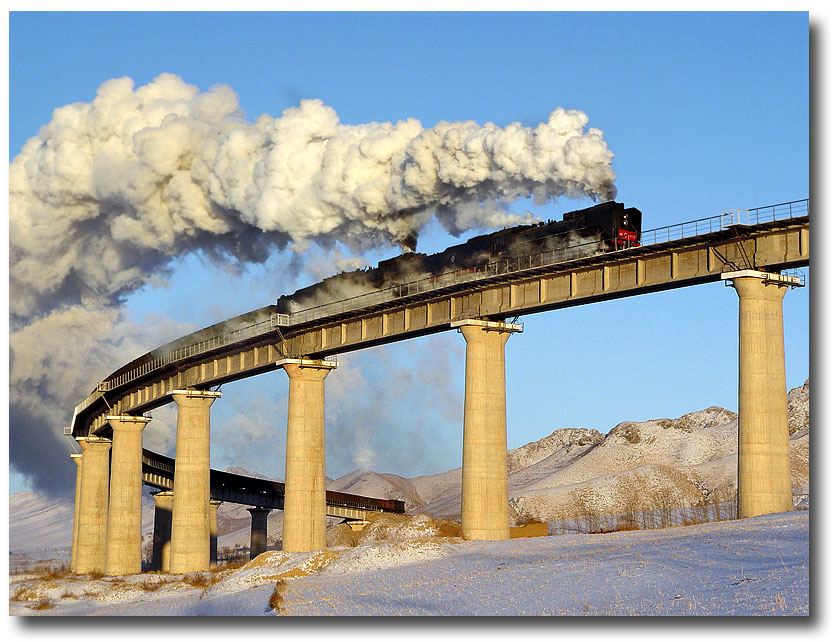 |
|
The bridge above SiMingYi is probably the most remarkable one of the JingPeng pass. Together with a following tunnel, the line describes a horseshoe curve that allows climbing the pass with a gradient
not exceeding 12.5 per thousand. Dec. 24, 2002. |
|
|
|
|
 |
|
Despite the fact that the Ji-Tong Railway was built by mid 1990ties, it was equipped with new semaphore signals, switchposts and brick buildings that contributed a lot to the line's charm and character. HaDaShan, where I captured this downhill freight, was an additional crossing station built a few years after inauguration of the line to enhance capacity. Dec.2002. |
|
|
|
|
 |
|
Crossing at XiaKengZi. Coal in the tender was prevented from freezing solid by a steam supply. The job of the second fireman on the tender was not to envy, covered one instant by warm steam clouds, being exposed to the icy Mongolian wind in the next. Dec. 30, 2002 |
|
|
|
|
 |
|
The contrast between the impressive development of modern China and the rural provinces could not have been any bigger. In low-key areas like here in Inner Mongolia, most people still made their livings as farmers, workmen or running some small businesses. Obviously, big business had not yet arrived at XiaKengZi when this photo was taken in 2002, and most people lived pretty much the same lives like their ancestors centuries ago. Dec. 30, 2002 |
|
|
|
|
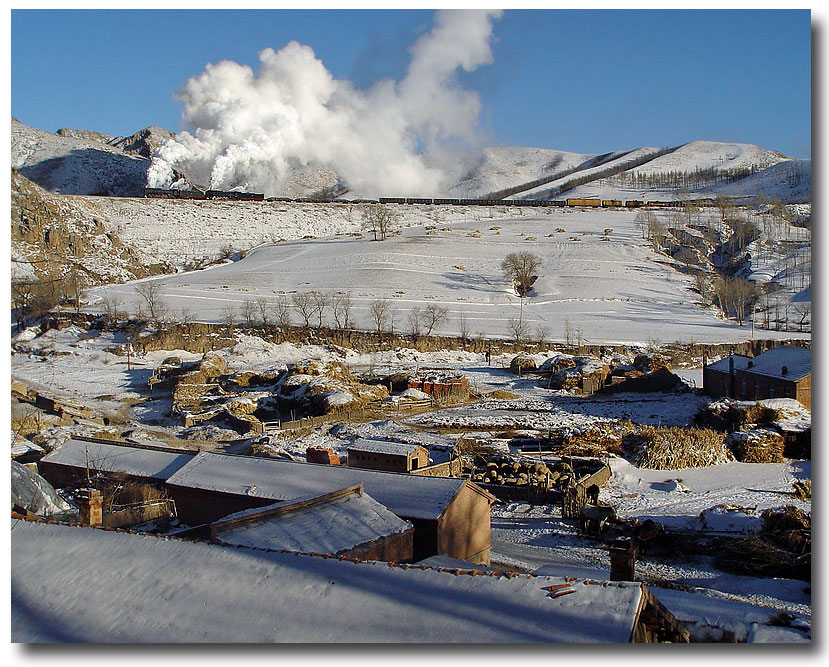 |
|
DaYingZi was another typical village on the western side. As soon as the winter sun disappeared behind the mountain ranges in late afternoon, it got freezing. The Sheepherd below seemed already to anticipate its stable when this uphill passed high above. Dec. 27, 2002. |
|
|
|
|
|
|
|
|
|
|
|
|
|
|
|
(c) Markus
Fischer, Zürich |
|





